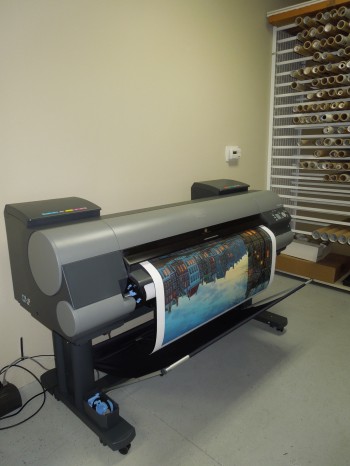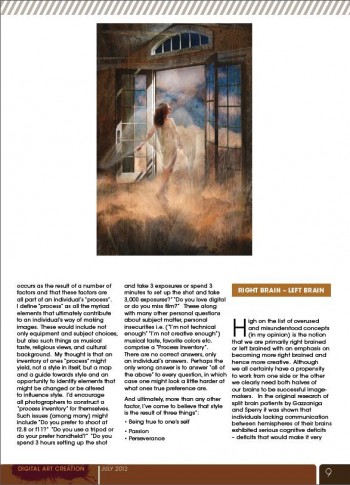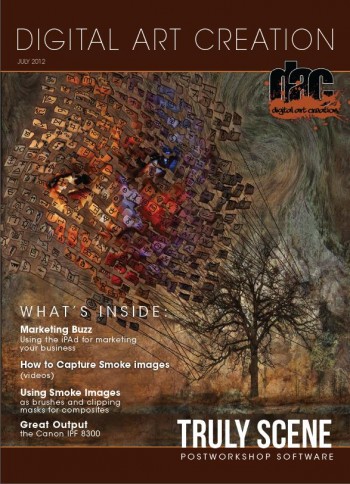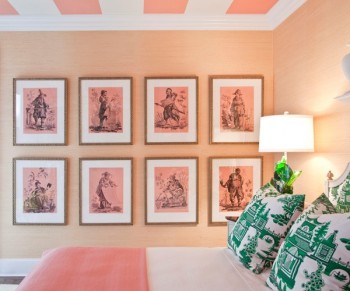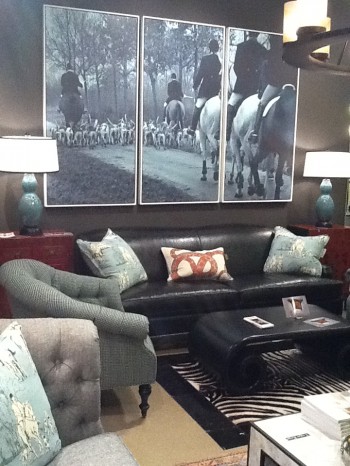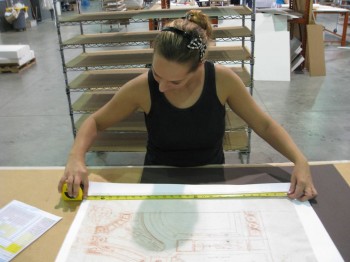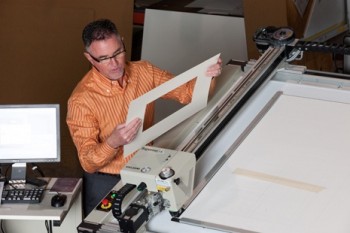
Is creative engineer an oxymoron, like military intelligence? You might think so, but think again. Damon Rando, owner of MyPix2.com, an Artful Color Inc. brand in Apex, N.C., breaks the mold in more ways than one.
Rando studied both computer engineering and fine art photography in college, inspired by his mentor uncle, who was also an engineer and photographer.
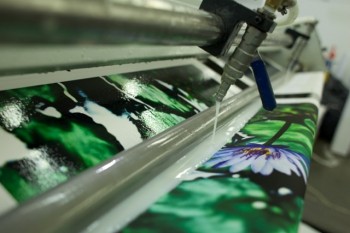 Rando had his own brush with military intelligence when he worked for the Air Force in weapons system testing. It was one stop along an interesting career path that eventually led to the formation of his fine art and photography reproduction company that included a stint at Waterford III making modifications to the control room at Three Mile Island and, most importantly, Apple.
Rando had his own brush with military intelligence when he worked for the Air Force in weapons system testing. It was one stop along an interesting career path that eventually led to the formation of his fine art and photography reproduction company that included a stint at Waterford III making modifications to the control room at Three Mile Island and, most importantly, Apple.
“I got fed up with military bureaucracy, packed up, moved to California and went to work for Apple in engineering, and then in channel marketing where all my big accounts were in the emerging desktop publishing and photo editing fields that were starting on the Mac,” says Rando.
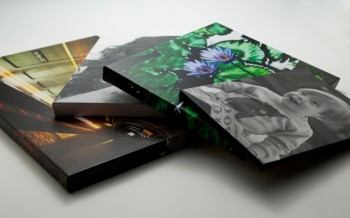 Rando worked his way through Apple for ten years, finding his way from engineering to color and how to best produce it for print. Rando and his team at Apple introduced ColorSync 2.0 and the ICC standard in the mid-’90s.
Rando worked his way through Apple for ten years, finding his way from engineering to color and how to best produce it for print. Rando and his team at Apple introduced ColorSync 2.0 and the ICC standard in the mid-’90s.
“During my last four years at Apple, my job was to get adoption of the ICC standard as the color business development executive for the U.S. sales force. I worked with People magazine, Time Inc., Simon and Schuster, the Smithsonian, the National Gallery and others to introduce them to and teach them about modern color management,” recalls Rando.
While he was at Apple, Rando started “tinkering,” as he puts it, with inkjet printing. Using the early ENCAD inkjet printer, he began putting together the pieces and parts of a color managed system for wide-format inkjet.
 “The whole color management process was one of the more technical aspects of the computer world to explain to people, which is why I was moved into the sales group supporting them because color management was so hard to communicate. I wasn’t about to pitch people on something that wasn’t a developed workflow so I dug into the best practices for color management,” says Rando. “Within that system in the early days, many of the applications didn’t have implementation inside the workflow; there were so many pieces that weren’t put together the way they are today. As an example, in the inkjet world, black build, even today, is a challenge with pigmented inks. When I was doing this in my house I was uncovering a lot of the shortcomings and working with the vendors to improve the process.”
“The whole color management process was one of the more technical aspects of the computer world to explain to people, which is why I was moved into the sales group supporting them because color management was so hard to communicate. I wasn’t about to pitch people on something that wasn’t a developed workflow so I dug into the best practices for color management,” says Rando. “Within that system in the early days, many of the applications didn’t have implementation inside the workflow; there were so many pieces that weren’t put together the way they are today. As an example, in the inkjet world, black build, even today, is a challenge with pigmented inks. When I was doing this in my house I was uncovering a lot of the shortcomings and working with the vendors to improve the process.”
In the early years of the 21st Century, Rando launched a fine art reproduction business on the side while he worked in the photo personalization group at Kodak with the NEXPRESS.
 “I learned a ton about the photo market, and saw where silver halide was not the future of printing and that inkjet was the future. I figured it wouldn’t be long before production equipment and workflow would replace silver halide, but I thought it would happen a lot sooner than it did,” says Rando. “There is a lot of investment in the silver halide process, which slowed down the transition, plus it’s very low cost per square foot.”
“I learned a ton about the photo market, and saw where silver halide was not the future of printing and that inkjet was the future. I figured it wouldn’t be long before production equipment and workflow would replace silver halide, but I thought it would happen a lot sooner than it did,” says Rando. “There is a lot of investment in the silver halide process, which slowed down the transition, plus it’s very low cost per square foot.”
Rando began researching and testing inkjet papers and pushed the highest performing and most affordable papers into the market. He was invested in inkjet early on, employing a battery of Epson printers for his work.
A break came in August 2010 when Rando pitched Living Social on a daily deal to market photos on canvas to consumers, leading to the launch of Artful Color’s consumer brand, MyPix2Canvas. Rando developed an e-commerce site and a production workflow for the brand and started selling coupons regionally.
 “Within a few months we moved production out of my home and into an 1,800 square-foot building at a business park. Three months later we got our second building, three months later our third building, and three months later our fourth building. During that time we became a national deal on Living Social and were featured on the Today Show twice as a part of Jill’s Steals and Deals. In August of 2012 we moved into a large facility and occupied 13,000 feet of a 21,000 square foot facility, and just this last month we took over the remaining 8,000 square feet.”
“Within a few months we moved production out of my home and into an 1,800 square-foot building at a business park. Three months later we got our second building, three months later our third building, and three months later our fourth building. During that time we became a national deal on Living Social and were featured on the Today Show twice as a part of Jill’s Steals and Deals. In August of 2012 we moved into a large facility and occupied 13,000 feet of a 21,000 square foot facility, and just this last month we took over the remaining 8,000 square feet.”
To cap it off, Artful Color recently took delivery of Epson’s new SureLab, a “dry lab” production machine that utilizes a special formulation of archival dye inks and is designed to replace the chemical process for producing portrait-sized photo prints.
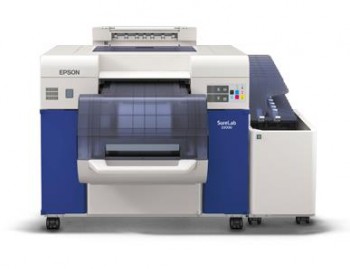
“The incredible thing about the SureLab is the archival dye inks it uses, instead of pigmented inks. The amount of color gamut, tonal range and image fidelity is like nothing else I’ve ever seen. We’ve refined the pigmented inkjet printing process, but the one area that still has some issues is that the five percent dark tinted gray tones have bronzing issues; you can still maintain the detail but you can’t quite maintain the richness of the blacks in that toning. The SureLab blows that away; it’s absolutely stunning,” says Rando. “What we can tell so far is that there are no shortcomings with the SureLab in image fidelity. The entire tonal range in every shading and the richness and vibrancy of every color in the rainbow is stunning.”
The SureLab complements the already tightly-managed wide format inkjet color management workflow where Artful Color uses a blend of LexJet Sunset inkjet media.
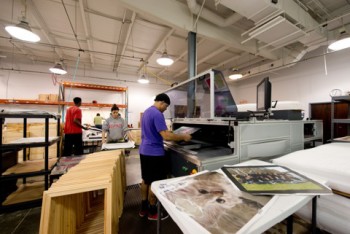 “We look at LexJet as one of our secret ingredients. I’ve worked with LexJet for about 14 years now. The great thing about LexJet is that they have distribution across the country, the finest media at an affordable price and they meet our high-volume demand while maintaining quality,” says Rando.
“We look at LexJet as one of our secret ingredients. I’ve worked with LexJet for about 14 years now. The great thing about LexJet is that they have distribution across the country, the finest media at an affordable price and they meet our high-volume demand while maintaining quality,” says Rando.
With the launch of the new website, MyPix2.com will offer fine prints and posters in addition to its popular canvas products. “We’re the modern day photo lab; the photo lab of the future: totally eco friendly with no chemicals. It’s environmentally sustainability in fine art reproduction that offers customers the best quality prints,” adds Rando.


